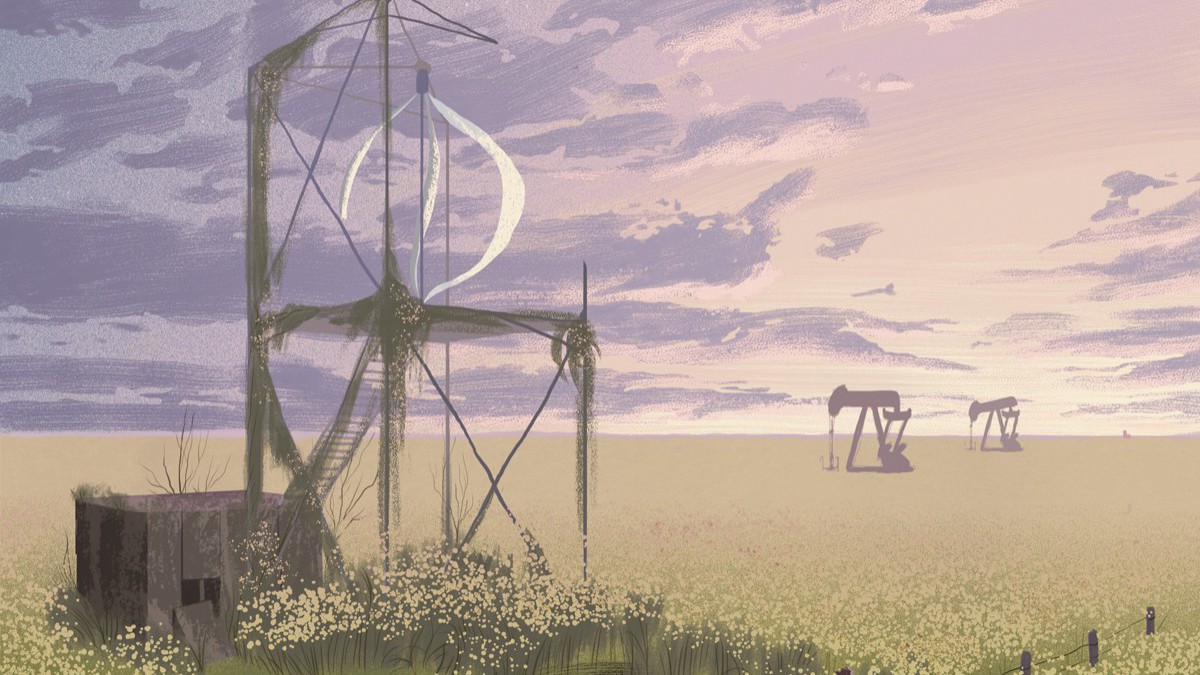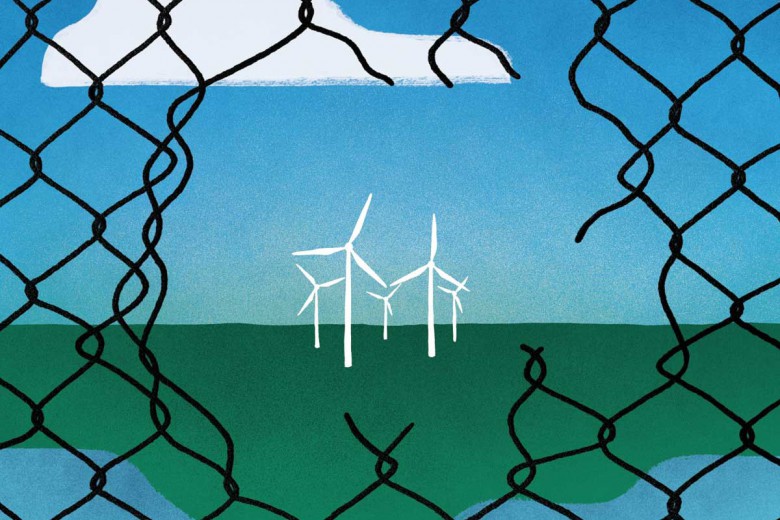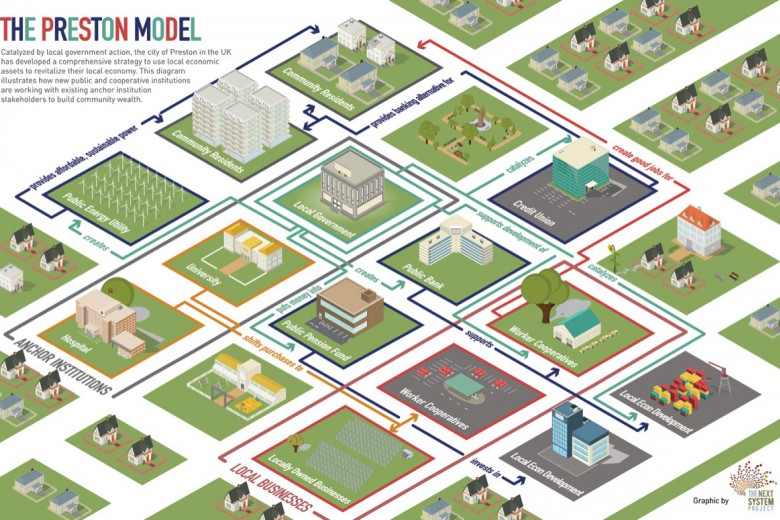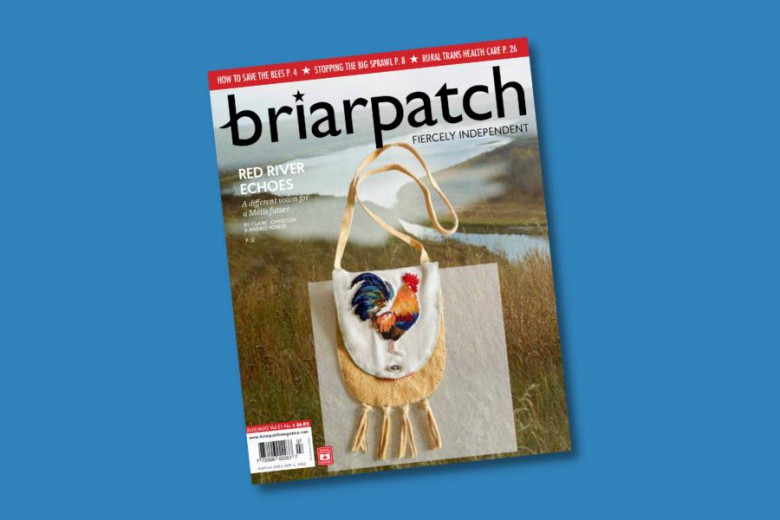Eleanor Skjerdal tilts her head back to watch the slender Pipistrel Virus aircraft from under her floppy denim hat, as the air show announcer describes its weight-saving carbon-fibre body. “There’s a use for carbon,” the retired schoolteacher jokes.
I am here at the Estevan Regional Airport in southeast Saskatchewan to ask area residents like Skjerdal about their thoughts on climate change.
Skjerdal, who lives on a farm an hour’s drive west of Estevan, is dubious. “Yeah, it’s an interesting subject,” she says, “but I don’t know if it’s a done deal yet.” She is indignant that farmers will soon be charged for emitting carbon instead of being paid for the carbon their crops absorb. As we watch the little Virus make its nimble moves, she mentions the pollution from a steady stream of passenger jets taking off from Minneapolis-St. Paul. “I think it’ll be a day or two before we’re flying on batteries,” she says.
Skjerdal’s views appear fairly typical of area residents, according to the Yale Climate Opinion Maps for Canada. In polls between 2011 and 2015, only 34 per cent of voters here in the federal riding of Souris–Moose Mountain said they believed that “Earth is getting warmer partly or mostly because of human activities.” (In Regina–Wascana, the urban riding that touches the northwest corner of this one, that number was double.) This rural area displays the lowest support of any federal riding in Saskatchewan for an increased tax on carbon-based fuels, at 35 per cent, which ties with Alberta’s riding that encompasses the tarsands, Fort McMurray–Cold Lake.
But along with the tarsands and aggressive pro-pipeline development, Alberta has a Climate Leadership Plan that puts a cap on oilsands emissions, accelerates retirement of its coal plants, and tackles emissions province-wide by pricing carbon. At the time of the air show, Saskatchewan has a Climate Change White Paper that defends the status quo (In December 2017, the province released Prairie Resilience: a Made-in-Saskatchewan Climate Strategy, and began steps toward regulating large industrial emissions). The Saskatchewan document rails against a federally imposed carbon tax, arguing that total provincial emissions are low compared with other jurisdictions around the globe (ignoring the fact that per-capita emissions are among the highest in the world), and that the best way to tackle emissions is to spread Saskatchewan’s carbon capture and storage (CCS) technology to coal-dependent nations. Souris–Moose Mountain, with its coal-fired plants and recently booming Bakken oilfield, seems a key place to look for clues to the province’s climate obstinacy – and for openings to move forward.
Doubts about climate change are not for lack of extreme weather.
In this riding, doubts about climate change are not for lack of extreme weather. In 2011, flooding of the Souris River and its tributaries overwhelmed the flood control capacity of the Rafferty and Alameda reservoirs, prompted states of emergency in both Weyburn and Estevan, breached a dyke and inundated the village of Roche Percée, and continued south into the United States, where 12,000 people were evacuated in the city of Minot. In 2014, heavy rains washed out roads and flooded basements along the eastern edge of the riding, and the entire village of Gainsborough was evacuated. But by late September 2017, when I visit the air show, the whole area is abnormally dry, with much of the riding experiencing moderate to extreme drought.
And yet at the air show, Brad Markham, who manages an oil well service rig, tells me that few people talk about climate change here. Although he personally believes it’s happening, he says, “It’s just not on the tongue too much around this area. It’s not an everyday thing that you talk about.” Markham says working in the oilpatch makes talking about climate change “a tough balancing act.”
Markham also explains the lack of talk by saying, “Here in Saskatchewan, we’re kind of in the centre of the country. Nothing really affects us; we don’t see adverse weather conditions….” Markham might have in mind Harvey and Irma, the two hurricanes that battered Texas and Florida only weeks prior. Saskatchewan doesn’t get hurricanes, but we’re hardly known for a mild and gentle climate. On the contrary, we see extremes so often they don’t seem extreme anymore, but rather a part of life.
Droughts may come, but none seem as bad as the stories of the Dirty ’30s. Lorne Jahn, a retired coal miner, is not old enough to remember those years. “But our dads did,” he tells me, “and they taught us every day about [how] it was and how high the wind was, and […] when the sandstorms came up, how their mothers would wet the dishrags and put them against the windows to keep the dust from coming in.” In this climate of extremes, with cultural memories of the drought of the 1930s and the blizzard of 1947, it’s especially difficult to see the signs of global warming. Jahn worries that fossil fuel combustion might use up too much oxygen, but as for climate change, he says, “It’s been happening since this world started spinning.”
In this climate of extremes, with cultural memories of the drought of the 1930s and the blizzard of 1947, it’s especially difficult to see the signs of global warming.
My family doesn’t share the local memories of the 1930s dustbowl. My parents moved to Saskatchewan just before I was born, settling in the Moose Mountain area in the mid-1970s.
In a barn on that farm where I grew up, my dad keeps a set of airfoils.
Slung from the rafters in cloth loops, they curve nearly five metres into the shadows. Up close, their blunt ends reveal cross-sections like airplane wings, and under the dust and black enamel, the rough end grain of wood.
They are the blades for a prototype wind-electric turbine my dad was building back in the 1980s. He was involved in wind-energy research at the University of Regina two decades before the 1997 Kyoto Protocol to limit greenhouse gases, and a decade before NASA scientist James Hansen brought global warming to the public eye in 1988. The prompt for my dad’s alternative-energy research back then was not the planetary excess of carbon dioxide, but artificial international shortages of oil.
In the 1970s, the Organization of the Petroleum Exporting Countries (OPEC) choked off the world’s supply of oil in a series of embargoes. At that time, the federal government was restructuring the industry to keep domestic prices low, and oil companies were taxed on their exports to fund nationally owned petroleum interests and transfer Alberta’s oil wealth east. For many, Petro-Canada stood for “Pierre Elliot Trudeau Rips Off Canada,” and a popular bumper sticker summed up the local sentiment about Trudeau’s 1980 National Energy Program by saying, “Let the eastern bastards freeze in the dark.”
A similar hostility lingers and reverberates in response to the younger Trudeau’s carbon tax.
Almost everyone I talk to brings up the carbon tax. When I ask Skjerdal what she wants to see happen, she says, “Well, I don’t want to see Trudeau charging us for carbon. That’s the first thing I don’t want to see.” When I ask Jahn how he thinks the tax would affect this area, he replies bluntly: “Kill it.” And when I ask Markham if he’d heard of scientists calling for “zero-carbon” targets, he says, “No, the only carbon thing you hear mention of nowadays is a tax.”
Many in the southeast would like to see less government intervention – but rapid transition off fossil fuels will demand not less, but more. My dad’s wind power project had funding from a federal-provincial agreement on renewables/conservation – until the deal fell apart after Saskatchewan elected Grant Devine’s Progressive Conservatives (PCs) in 1982. In the first phase of the project, a commercial horizontal-axis wind turbine powered our house for nine months, but then some parts failed and couldn’t be replaced. Still, my dad and other researchers picked away at designing and building the new vertical-axis turbine for nearly a decade, until a setback with the brake design finally halted the project.
In a curious echo, in 2010 I saw a commercially available wind turbine, also a vertical-axis design, installed at the University of Regina as part of a demonstration project for the Regional Centre of Expertise on Education for Sustainable Development. Researchers planned to expand the project into an alternative-energy training program in co-operation with the Saskatchewan Institute of Applied Science & Technology (now Saskatchewan Polytechnic), but that initiative could not find support. Today, the turbine is still there, but it’s not turning. I wonder whether truncated projects like these feed skepticism about climate action. How different would things look if consistent funding pushed through the inevitable setbacks to show some real alternatives to oil and coal?
Premier Brad Wall’s stand against the carbon tax is popular in southeast Saskatchewan, but so are conservative politics in general. The Saskatchewan Party holds all five provincial seats that together make up roughly the same area as the federal riding of Souris–Moose Mountain. Federally, voters here have elected conservative representatives (Conservative, Alliance, Reform, or PC) in all but one election since the riding was formed in 1988, and the somewhat smaller Qu’Appelle–Moose Mountain riding that preceded it had elected PC candidates throughout the 20 years before that.
PC premier Grant Devine’s government fell in 1991 in the midst of a financial scandal that eventually landed five former members of his government and one staffer in jail. Toward the end of his premiership, Devine had pushed through the Rafferty-Alameda dam project in spite of an environmental battle that eventually moved federal environmental assessment from a guideline-driven process into court-ordered law.
Local residents showed mixed responses to environmental criticism about the two dams, Rafferty on the Souris and Alameda – renamed the Grant Devine dam in late November 2017 – on its tributary, Moose Mountain Creek. Along with warnings about loss of valley habitat, perhaps the most compelling criticism was the argument that the reservoirs might never fill. But after a drought during their construction, several wet years came quickly after their completion in 1993, and by 1997 the reservoirs were operating into their flood control level. In a land with few large bodies of water, the new lakes quickly became popular boating and fishing sites. Although the dams failed to protect Minot in 2011, the Estevan Mercury excused them by calling that flood a “freak temper tantrum from Mother Nature.” Some question whether to blame flooding on extreme weather at all, instead noting that wetland drainage and road construction has changed the way water moves through the landscape. Again, what seems obvious to outside eyes looks different if you live in this place.
I find Igor Dobrianskyi, a mechanic who works on heavy-duty agricultural equipment, watching the air show with his young son hoisted on his shoulders. “I’m really worried about this climate change,” Dobrianskyi tells me. “We have a small kid, and I’m not sure about the future.” Just a week ago, as Hurricane Irma made its second Florida landfall near Naples, Dobrianskyi was on Skype with his brother who lives between Naples and Tampa, hearing about how trees there were bent “almost parallel to the ground.”
Dobrianskyi, who has a university degree in engineering from Ukraine, is more optimistic than most about a carbon tax. He acknowledges that it would hit some people hard, but he says with time the change should bring better technology and efficiency. And the coal industry needs to prepare regardless, he says, “before they close and have a crisis.”
Dobrianskyi’s son wants to get back on the ground, and he tugs on his father’s hand, leading us along as we talk. “He wants to play,” Dobrianskyi says. “I would like to have for him a very nice planet after us.”
Even those who question human contributions to climate change generally agreed that emissions should be reduced. Jahn says, “Well, I would like to see cars that were cleaned up and stuff. A lot of that stuff should be done, regardless.” But none seem optimistic about achieving big reductions. Brian Blommaert, who works in the oilfield, has heard the calls for zero emissions. “I don’t know how they’re going to do that, to be honest with you,” he says. “They can’t make an airplane run on wind power, for instance, right?”
If people here are to get on board with more than incremental changes, they’ll need evidence that a transition could work, and work for them. Instead, they see ongoing near-universal dependence on fossil fuels, even in the cities, and even among those sounding the alarms.
If people here are to get on board with more than incremental changes, they’ll need evidence that a transition could work, and work for them.
In a recent report titled “Climate Politics in the Patch,” Emily Eaton writes that activists and leaders “need to engage the communities whose livelihoods are on the line and offer them a plan for a transition they can believe in.” Eaton, a geography professor at the University of Regina, studies the close connections between oil companies and communities in southeastern Saskatchewan. Whether through jobs, land lease payments, small contracts for individuals, or donations toward community amenities and even vital services such as hospital and firefighting equipment, oil companies help rural residents meet real needs. Eaton argues that policymakers need to show how a renewable energy industry – and a deeply transformed rural economy – could do the same.
Estevan is one of the sunniest cities in Canada. Winds are higher farther west, but there’s still strong potential for wind power in the area, too. The chamber of commerce of this self-proclaimed “energy capital” recently urged a letter-writing campaign to try to convince SaskPower to site a solar plant here. High school students got national attention for their campaign to reduce emissions by stopping drivers from idling their vehicles in the city. Attitudes are complicated here.
I find myself thinking about the planes at the air show, revving toward the sky and yet using the tug of gravity for all the excitement and suspense of their displays. Many in Estevan would like to reach for the sun and the high wind – and yet deep doubts drag these visions down to earth, where farm tractors, oil pumpjacks and coal draglines provide daily livelihoods.
Back home in Regina, a magazine lands on my kitchen table with a cover story about a new airplane. It’s a trainer, designed only for short flights, but still, I wonder what Skjerdal would think. An electric motor drives the propeller. There’s no fuel tank in this plane – only a battery.







